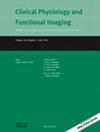Physiological alterations around the menopause transition—A 2-year follow-up in PRE, PERI, and POST menopause females
Abstract
Introduction
The menopause transition is a critical period marked by significant physiological adaptations. Data on the dynamic changes in body composition and metabolism during this transition are limited. The purpose was to determine body composition and metabolic changes over a 2-year follow-up in a cross-sectional sample of premenopausal (PRE), perimenopausal (PERI), and postmenopausal (POST) females.
Methods
Twenty-three females who previously participated in a cross-sectional study returned for a 2-year follow-up visit were classified as PRE, PERI, or POST based on menstrual history and a Menopause Health Questionnaire. Muscle size [muscle cross-sectional area (mCSA)] and muscle quality [echo intensity, (EI)] were evaluated in the vastus lateralis with ultrasound. Bone mass and body composition were assessed using dual-energy X-ray absorptiometry, and metabolic flexibility through submax exercise with indirect calorimetry.
Results
At the 2-year follow-up, POST females had an increase in EI (change: 26.93 ± 12.82 a.u., group×time p-adjusted = 0.001) with no change in mCSA (change: −2.03 ± 2.40 cm², group×time p = 0.980). PERI compared to PRE females had lower total bone mass (group×time p-adjusted = 0.029) with an even lower bone mass in POST compared to PERI females (group×time p-adjusted = 0.023). No differences in metabolic flexibility at any exercise intensity were observed between groups over time (group×time p = ≥ 0.05).
Conclusion
This study highlights a decline in muscle quality and total bone mass despite stable muscle size, emphasizing the need for targeted exercise and nutrition interventions to support muscle and bone health in females around the menopause transition.

 求助内容:
求助内容: 应助结果提醒方式:
应助结果提醒方式:


